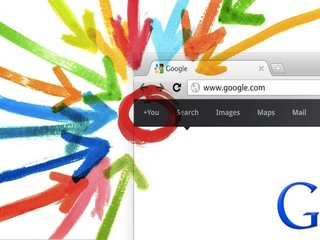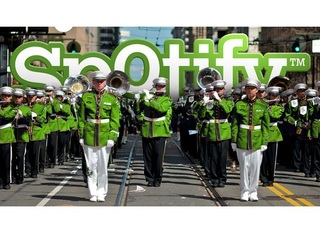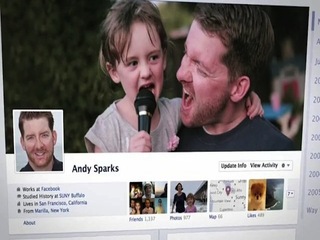DUOS expands AI capabilities to help seniors apply for assistance programs
It will complete and submit forms, and integrate with state benefit systems
Read more...
I feel confident in saying that 2011 is the year of social media. We saw companies go public, the number of people on social sites skyrocket, and deeper integration across the Web and mobile devices so that networking is never far from your fingertips.
Since the days between Christmas and New Year's beg for reflection of the months gone by, I have compiled a list of 10 of the biggest boons to the social media evolution this year and what some of these changes foreshadow what social media will look like in our very near future.
1- LinkedIn becomes one of the few positive tech IPOs
Unlike Groupon, Pandora and Demand Media, LinkedIn has seen some great trading in its first few months on the public market -- and that bodes well for other networking companies like Facebook, which is scheduled for IPO next spring.
On its first day of trading (on May 19), LinkedIn opened at $83 a share— 84% higher than its starting price of $45. The stock peaked at $115, and closed at $94.25 -- more than double its starting price, for a market cap of $8.9 billion.
As a private company, LinkedIn raised a total of $103 million from Sequoia, Greylock, Bain, Bessemer, Goldman Sachs, McGraw-Hill Companies, Josh Kopelman, European Founders Fund, and SAP.
CEO Jeff Weiner credited LinkedIn’s success to its investors at the time of the IPO by saying that they "spent a lot of time with the right kind of investors–folks who understand the story, the fundamentals, who are in it for the long haul."
LinkedIn is the first major U.S.-based social network to go public, and the ballooning demand for LinkedIn stock is exciting those anticipating the Facebook and Twitter debuts.
While the company has seen some rocky weeks on the exchange (NYSE: LNKD), which has shares now trading near $61, the long-term potential for the company is still strong since the company continues to debut new revenue opportunities for hiring and recruiting industries.
2- Google+ debuts
In the middle of summer, Google jumped back into the social networking game (after some botched attempts with Google Buzz and Google Wave) and debuted Google+.
The company, famous for its search engine popularity, has ruled the Web with the top email, maps and photo/video services but had never been able to corner the social networking arena. Following here is a rundown of the central features available in Google+ and what the competition, namely Facebook, is already doing to counter them.
Many people that got access to the soft-launch of the service saw serious potential in its 'Circles,' 'Hangouts,' and 'Chat' features. The clean design and ability to interact and share email, Google Docs and Picasa pictures was being dubbed 'a Facebook killer' in its early days.
Soon Google+ was named the fastest growing social network ever and now boasts between 62 and 67 million users in just six months.
While Facebook is still the big dog at the park, with more than 800 million users worldwide, Google+ has been taking off in countries abroad, such as the Philippines and Tibet and the Hangout feature is now quickly being labelled the signature attraction that could help differentiate Google+ from Facebook.
Google has even stepped outside its usual marketing bubble and started running ads for Google+ -- starting with one sentimental ad over Thanksgiving and now three more that debuted at Christmas -- touting the video conferencing service as a great way to 'just hang out.'
While the number of accounts on Google+ continues to grow, the actual activity on the site remains spiky and is feeling sparse to those trying to interact on the platform.
In the new year it will be interesting to see if the service finds its stride and becomes the place to video conference and broadcast events to a worldwide audience, or if Google has to restrategize in order to compete against Facebook.
3- Twitter's role in Occupy
Earlier this month, Time named 'The Protestor' the Person of the Year and it is easy to say that this honor might not have been bestowed on those taking to the streets to fight for their causes if it weren't for the real-time communication that Twitter offered them.
One such movement that has been a Twitter staple since the summer was the The Occupy Wall Street protest coverage.
In September, the #occupywallstreet hashtag started a micro-blogging revolution that thousands of cities and countries soon jumped on with their own observations of injustice and inequity and even journalists started using Twitter to keep their readers updated with protest and financial goings-on that were relevant to the movement.
From Wall Street, San Francisco and Oakland to Hong Kong, London, and Sydney -- millions tweeted their thoughts on the Occupy movement in their hometowns and abroad -- many providing pictures and video of actions they were seeing.
In the early weeks of the Occupy protests in New York, it looked as if the media was going to move past the efforts, but Twitter kept the buzz going and soon the actions and the financial factors causing the outrage were given a lion's share of broadcast time.
While the people on the ground protesting clearly had the stamina to continue raising awareness, it was Twitter that kept the buzz alive and it appears that Twitter will continue to be a central tool in many future social and political movements that want a global audience.
4- Spotify enters the Facebook landscape
As summer was fading out, Facebook held its f8 conference and made several exciting announcement, but one of them changed the life of music aficionados -- Spotify's new integration.
After just a few weeks of being available in the US (and after many of us had clamored for invites to get into the free music streaming service) Spotify announced that it would be available to anyone with a Facebook account.
Spotify was a big hit in the UK, allowing users to listen to almost any song, on-demand, for free. Most similarly resembling Pandora (but offering the option of creating playlists so you can listen to the songs you want rather than playing stations with similar music styles), Spotify looked like it would change the landscape of the way people consumed music online.
This partnership between the largest social media network and a music service definitely turned heads -- and meant that, instantly, some 800 million people would gain access to most of the music they could ever think of playing at the touch of a button.
And, since the free version of Spotify is advertisement based, I can only imagine the excitement that their advertisers had when they learned of this new integration.
In the weeks following the announcement and integration, Pandora stock (NYSE:P) felt the pinch and soon dropped into the $9 range, after experiencing an all-time high of $26 that summer.
Next year could continue to be an exciting time for Spotify to really spread its wings and show that the fermium model can work for the music industry, especially with such strong partners like Facebook.
5- Social media stands against SOPA together
The Internet is nothing without the free exchanging of ideas and digital content and the U.S. House Judiciary Committee has seen just how passionate most people and tech companies are about not interfering with that ecosystem.
This year the Stop Online Piracy Act (SOPA) was introduced in Washington and, while many Internet companies were divided on the issue (often based on the way they make their money), social media stood together in opposition of controlling the content shared on the Internet. Facebook, Twitter, LinkedIn, Foursquare Google and Wikipedia have all made it clear that the threat of shutting down websites if content is shared that may be copyright infringement would hurt their business and the free speech that the Web exists on.
it remains to be seen whether House will reject SOPA, but its has shown Internet users that the leaders behind social media companies are unwavering in their passion to allow people the platform to speak and share as freely as they can in order to create a rich Internet experience.
6- YouTube channels
The debate continues as to whether the Internet will kill cable and YouTube geared up this year to tip the scales in favor of Web content.
Google-owned YouTube, put $100 million toward providing quality, original content for the social platform and in the coming months will be rolling out 100 channels created by the likes of Reuters.com, WWE Fan Nation, The Wall Street Journal, Bleacher Report and American Hipster.
The channels were created to ultimately generate at least 24 hours of original programing each day -- much like an alternative cable channel.
YouTube's creation of new and original content that users can subscribe to will presumably result in an increase in the number of minutes that each user will be on the site. Especially considering that the average YouTube video is only 4 minutes and the average user is on the site five hours a month.
Celebrities that will be featured on different YouTube channels include Shaquille O'Neal, Madonna and Ashton Kutcher.
The new channel system is much cleaner and easier to navigate both on YouTube and on Google TV. The company has also paired this channel upgrade with a software update for the Sony televisions and Logitech set-top boxes that run on the Google TV platform. Google TV has not met the high sales goals it set and could use some new features and incentives if it wants to compete in the electronics market.
It is hard to tell if the increased content and smoother interface will result in more TVs sold, but it will likely increase time the average user is watching content, and thus the number of advertising dollars running through the site. At least there will be more videos that have little or nothing to do with adorable cats.
Next year could be the year that we really see people cutting the cable in favor of Wi-Fi.
7- Zynga goes public
We waited all summer and fall for it (and finally) this month, the largest social gaming company went public. Sadly, the San Francisco-based company didn't pop off the charts like many had hoped and left those excited to invest in social gaming with some cause for reflection and deeper investigation.
On the first day of trading, Zynga's stock broke through its IPO price of $10 a share and closed at $9.50.
The poor showing came after the stock popped opened at $11 on the NASDAQ under the ticker: ZNGA.
Typically, if a stock soars on the first day of trading, it can often suggest that the bankers priced the stock at a discount to its real value so new public shareholders could get some upside. Even though bankers priced the stock reasonably well, it's not a good sign when a stock falls below its IPO price, on the first day.
But the poor showing was not a result that came out of nowhere. The company's valuation had been erased multiple times leading up to the IPO -- ranging from $7 billion and $20 billion.
This range came from the growing concern that Zynga is far too dependent on Facebook for revenue and that new games and mobile integration have not done enough to boost revenue for the company.
Even though analysts have estimated that Zynga's revenue next year at $1.5 billion, CEO Mark Pincus spent the two weeks prior to the IPO pitching his rapidly growing company to investors that had concerns about whether the company could improve upon its financial viability.
In order to gain confidence, Pincus has had to explain the multi-pronged business strategy that Zynga has and down play the dependance it has on Facebook.
Since more than 90% of Zynga's revenue comes from Facebook, this was no easy feat, but it appears that investors were clamoring to get their hands on the gaming stock.
Zynga's public debut was the most anticipated final IPO in a week of 11 stock inaugurations.
This Zynga IPO is the biggest by a U.S. Internet company since Google Inc. (GOOG) raised $1.9 billion in its 2004 IPO and has kept a lot of investors looking to Asian public companies to see what could happen when a social game enters the market.
This dim showing means that Zynga will be spending much of 2012 proving the critics wrong -- and that is not unfamiliar territory for the young company. We many see stronger pushes for mobile integration and maybe even some more mature and intricate games for those that want a little more flash for their dime.
8- Facebook rolls out Timeline
Another item announced at the f8 in September was the highly anticipated Timeline feature which finally went live for everyone this month. Facebook was mum about the layout change for nearly four months after the conference and then started the rollout this month -- the complete platform-wide change finalizes this week.
This ambitious layout makeover completely redesigns how people interact with profiles. Everyone should have the function as of now and you have seven days review the feature before your friends can see your new shiny set-up. Already more than 1 million people are using the feature, according to Facebook.
With a design reminiscent of a scrapbook, Timeline the biggest redesign Facebook has ever undertaken. Since the change is so drastic, Facebook is gave people a one-week review period to delete or hide anything on the Timeline before anyone else gets a peek.
This feature has spurred a lot of buzz about what users do and don't like about the change -- which was expected.
Some people criticize that this change is messy or that it has too big of a focus on photos that people post, but others are excited about the ability to retroactively fill in life events and memories to digitally store forever.
The new layout is putting a different, greater emphasis on the photos that you upload or are tagged in. Right at the top of the new design is a large vertical photo that allows users to really showcase a great landscape picture or another image that depicts your personality -- your profile image is now just a small mugshot in the top left corner.
Facebookers can also add an image or whole album for each event in their life to compliment the visual focus of the layout -- and much like creating any album, you can choose the main image that will be focused on.
All of your privacy settings remain the same in the Timeline feature, as they would have been before -- the only difference is before, it took a lot of patience to scroll through thousands of posts to go back a year or five.
Much like Google+ circles, you can set up groups so that you can share different posts or albums with different people in your friends' list.
Also keep in mind when you make new events and posts that you see if you are posting as public, private or some customized setting you have created.
There is also a new feature for those people who don't want to just delete items. This feature is called "Only Me." As you are curating your profile for the Timeline transition, you may not be sure what you wish to keep and what you want to be invisible so you can label it for your eyes only and keep the memories without concern that friends or family will see them -- if you later choose to delete or make it public, you also have that option.
In the coming year expect to see some tweaks to the system and maybe even some new additions -- I personally think that it would be great if you could create joint scrapbooks for different people in your life and even find ways to print or publish portions to send to people, much like Apple offers in its digital iPhoto service.
9- Twitter integration in iPhone iOS5 update
Over the summer at the WWDC conference we learned that the iOS5 update would feature a deeper Twitter integrations for the iPad and iPhones and even then we could see what a big deal it would be.
Once the new mobile OS launches, users were able tweet easily from a number of native iOS applications, including Camera, Photos, Safari, Contacts, YouTube and Maps. As easy as it is to email a photo or the link to a video, tweeting out content from a mobile Apple device will be just easy.
This was a win for Apple and Twitter. While the numbers are hard to pin down, Twitter has not been shy about what a boost to the traffic and account signups the new integration was for them and shows other social networks the possibilities that come with a strong Apple partnership.
Many are expecting that Facebook will be the next to get the Apple seal of approval and become integrated into native apps.
10- Learning about world events through social media first
Throughout the year, there have been some big world event stories that we all learned about first on Facebook or Twitter. From the death of Osama bin Ladin and Muammar Gaddafi to the natural disaster and nuclear backlash at Fukushima, social media has changed the pace at which we receive breaking news and the speed at which we respond, reflect and share that with others in our network.
While all of these events would have been big news if they occurred any year, the fact that they happened in the middle of a booming social media moment meant that we all were exposed in very instant and fragmented ways.
I can't help but stop and think about how I learned about the planes crashing into the Twin Towers on 9/11 -- it was an early morning phone call and a switch on of the television to find out about something that happened hours earlier. And that was just 10 years ago.
Nowadays we find out the moment that an earthquake happens or a person is escorted off of a plane and we hear stories everyday about how people are rescued because of a text, Tweet or status update.
It is hard to imagine that in the next year social media could have an even larger impact in al of our lives -- but at the same time, I don't see how it couldn't.
It will complete and submit forms, and integrate with state benefit systems
Read more...The bill would require a report on how these industries use AI to valuate homes and underwrite loans
Read more...The artists wrote an open letter accusing OpenAI of misleading and using them
Read more...Startup/Business
Joined Vator on
Zynga is the largest social gaming company with 8.5 million daily users and 45 million monthly users. Zynga’s games are available on Facebook, MySpace, Bebo, Hi5, Friendster, Yahoo! and the iPhone, and include Texas Hold’Em Poker, Mafia Wars, YoVille, Vampires, Street Racing, Scramble and Word Twist. The company is funded by Kleiner Perkins Caufield & Byers, IVP, Union Square Ventures, Foundry Group, Avalon Ventures, Pilot Group, Reid Hoffman and Peter Thiel. Zynga is headquartered at the Chip Factory in San Francisco. For more information, please visit www.zynga.com.
Startup/Business
Joined Vator on
Pandora, the leading internet radio service, gives people music they love
anytime, anywhere, through a wide variety of connected devices: laptop and
desktop computers, smartphones, connected BluRay players, connected TVs,
etc. Personalized stations launch instantly with the input of a single “seed” –
a favorite artist, song or genre. The Music Genome Project®, a deeply
detailed, hand-built musical taxonomy, powers the personalization or
Pandora. Using this musicological “DNA” and constant listener feedback
Pandora crafts personalized stations from the more than 800,000 songs that
have been analyzed since the project began in January 2000.
More than 75 million people throughout the United States listen to
personalized radio stations for free on Pandora through their PCs, mobile
phones and devices such as the iPad, and connected in-house devices
ranging from TVs to set-top boxes to Blu-Ray players. Mobile technology has
been a significant factor in the growth and popularity of Pandora, starting
with the introduction of the Apple app store for the iPhone in the summer of
2008. Pandora instantly became one of the most top downloaded apps and
today, according to Nielsen, is one of the top five most popular apps across
all smartphone platforms.
Pandora is free, simple and, thanks to connectivity, available everywhere
consumers are – at the office, at home, in the car and all points in between.
In 2009 the Company announced that Pandora would be incorporated into
the dashboard in Ford cars via SYNC technology; GM has already followed in
announcing plans to integrate Pandora into its vehicles and Mercedes-Benz
introduced their Media Interface Plus device that works with the
free Pandora iPhone app to provide direct control of Pandora from in-dash
stereo controls. This was all great news for the millions of Pandora listeners
who had been plugging their smartphones into car dashboards to listen to
personalized stations while driving. More than 50 percent of radio listening
happens in the car, making it a crucial arena for Pandora.
Today tens of millions of people have a deeply personal connection with
Pandora based on the delight of personalized radio listening and discovery.
These highly engaged listeners reinforce the value Pandora provides to: 1)
musicians, who have found in Pandora a level playing field on which their
music has a greater chance of being played than ever before; 2) advertisers,
who benefit from the multi-platform reach of Pandora, as well as its best
practices in targeting consumers for specific campaigns; 3) the music
industry, which has found in Pandora a highly effective distribution channel;
and 4) automobile and consumer electronics device manufacturers, who have
noted that incorporating Pandora into their product makes it more valuable
to consumers.
Pandora continues to focus on its business in the United States. The radio
arena has never been hotter, thanks to technology that enables radio to be
personalized to the individual and more accessible than ever before. Right
now millions of people listen to Pandora in the United States and we hope
someday to bring Pandora to billions of people around the world.
Timeline:
• 2000 – Tim Westergren’s Music Genome Project begins.
• 2005 – Pandora launches on the web.
• 2008 – Pandora app becomes one of the most consistently downloaded
apps in the Apple store.
• 2009 – Ford announces Pandora will be incorporated into car
dashboard. Alpine and Pioneer begin selling aftermarket radios that
connect to consumers’ iPhones and puts the control and command of
Pandora into the car dashboard.
• 2010 – Pandora is present on more than 200 connected consumer
electronics devices ranging from smartphones to TVs to set-top boxes
to Blu-ray players and is able to stream visual, audio, and interactive
advertising to computers, smartphones, iPads, and in-home connected
devices.








